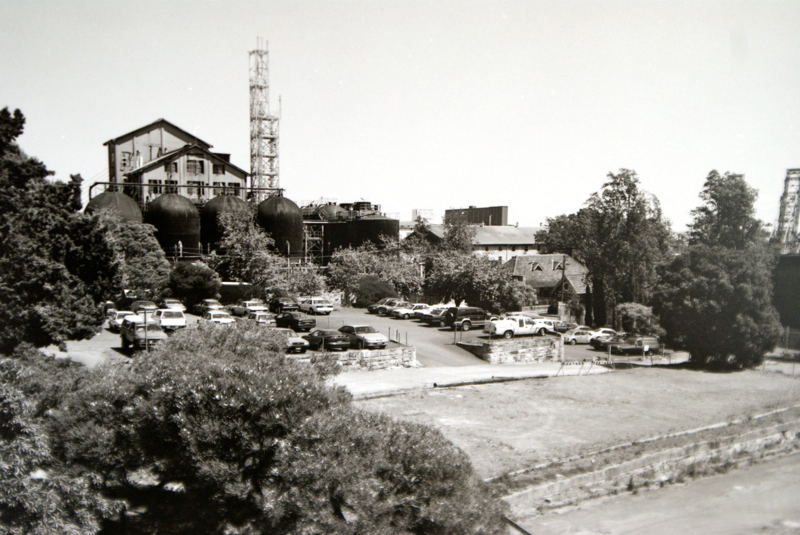Cadigal Terraces
Date Built: 2000
Architect: Richard Huxley
25 Terraces, a contemporary take on Victorian terraces which once existed here CSR site where New Street once ran and which eventually became a CSR carpark.
Cadigal Terraces
1990
In 1984, as industries quit Pyrmont, the government resolved to redevelop the area, and in 1987 decided that the peninsula needed its own plan. In the same year CSR asked Lend Lease to study the feasibility of redeveloping the industrial site. Many studies ensued: the Pyrmont-Ultimo Heritage Study (1990), a Social Impact Assessment (1991), and a Regional Environmental Plan (1992). In 1993 the Pyrmont-Ultimo Urban Development Plan was approved, and so was a Master Plan for Pyrmont Bay.
As historical sources the most useful studies were archaeological surveys, summed up in the Sydney Harbour Foreshore Authority¹s Jacksons Landing Interpretation Strategy, and Jane Bennett’s extraordinary series of paintings. A few years later John Broadbent complemented these studies with his comprehensive history of the ecology of the peninsula.
Pyrmont residents were divided: some were forced to leave the area, others welcomed development, but in 1979 opponents formed UPROAR (Ultimo Pyrmont Residents Opposed to Arbitrary Redevelopment) and endured years of being consulted (or, in their view, coerced). In August 1992 a few activists proclaimed the Republic of Pyrmont. In this brilliant but forlorn gesture the republicans issued visas, and publicised their critique of top-down planning, and in particular to Jacksons Landing, and the proposed casino and helipad.
Meanwhile in 1997 Lend Lease bought the CSR site, and by April 1999 Jacksons Landing was under construction, and plans were agreed to create Cadigal Avenue and its terrace houses.
The name seems to have been adopted as a conciliatory gesture towards the original inhabitants of this part of Sydney. Aboriginal people were living on the peninsula as late as the 1830s, and the Cadigal (or Gadigal) clan of the Eora people did occupy much of Sydney south of the harbour in 1788.
They called their territory Cadi (hence Cadi Park, a similar gesture). Whoever they were, and whatever their collective name, many died in the smallpox epidemic that swept through the region in the year after the First Fleet arrived. Some people (a Darling Harbour ‘tribe’) were living on the peninsula as late as the 1830s, but they may not have been the earlier inhabitants, and in any event we do not know what they called themselves.
The archaeologist Wayne Johnson believes that Gadigal lived on the other side of Darling Harbour; Shirley Fitzgerald agrees that the people living around Darling Harbour and the headwaters of Blackwattle Creek were distinct from the Gadigal.







